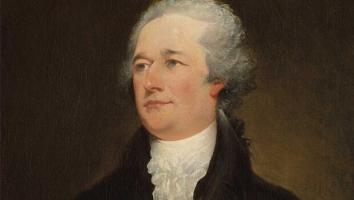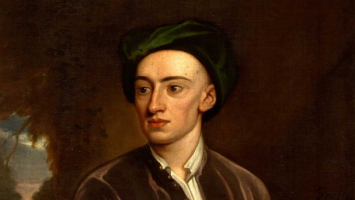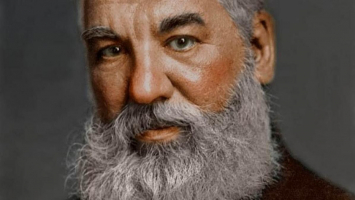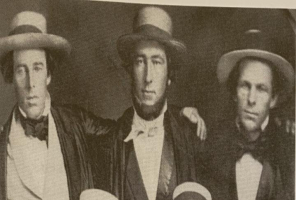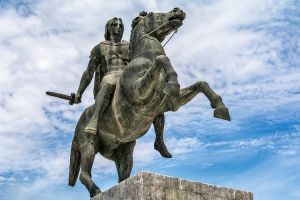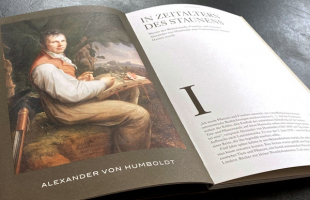Top 7 Interesting Facts about Alexander Fleming
The son of a farmer, Alexander Fleming was raised in Scotland before moving to London to attend the St. Mary's Hospital Medical School. He assisted Sir Almroth ... read more...Wright there while working with him. Working in hospitals treating wounded soldiers during the First World War motivated him to conduct research that resulted in the discovery of penicillin. He published numerous publications in his profession and produced other significant discoveries in addition to penicillin. Do you curious about this man? Let's follow Toplist to discover some interesting facts about Alexander Fleming.
-
Hugh Fleming and Grace Stirling Morton's third child, Alexander Fleming, was born on August 6, 1881, at Lochfield Farm, close to Darvel in Ayrshire, Scotland. Hugh Fleming's first marriage produced four children. When he wed Grace for a second time, he was 59 years old, and he passed away when Alexander was just seven. One of the interesting facts about Alexander Fleming is when he was a kid, he didn't get a lot of education. But he demonstrated that he was a keen observer.
His scholastic talent was found at the age of 11, and he was given the scholarship to attend the Kilmarnock Academy. He spent two years there studying before relocating to London. He attended the Royal Polytechnic Institution and worked in a shipping office because he could not afford to attend a private institution. Alexander Fleming, being twenty years old, received some money from his uncle John Fleming after spending four years working in a shipping agency. Tom, his older brother, who was a doctor himself, encouraged the younger Alexander to pursue a career in medicine, and in 1903 the younger Alexander enrolled in Paddington's St Mary's Hospital Medical School. He earned a BSc in bacteriology and an MBBS in 1906 and 1908.
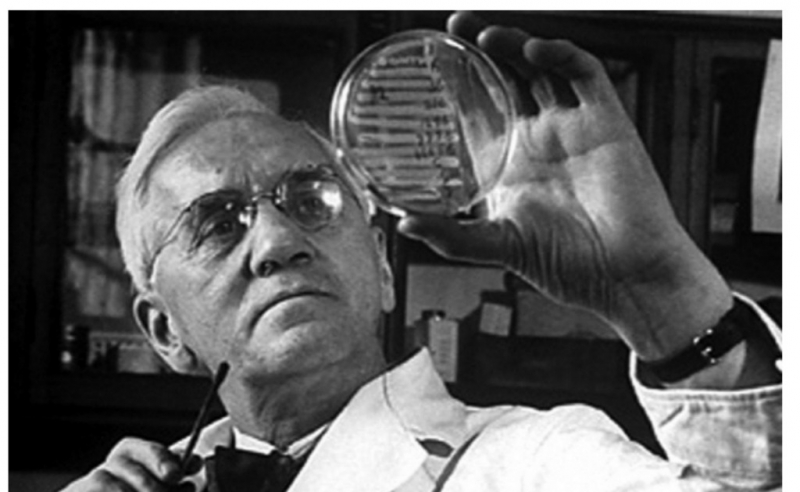
Photo: Alexander Fleming - thanhnien 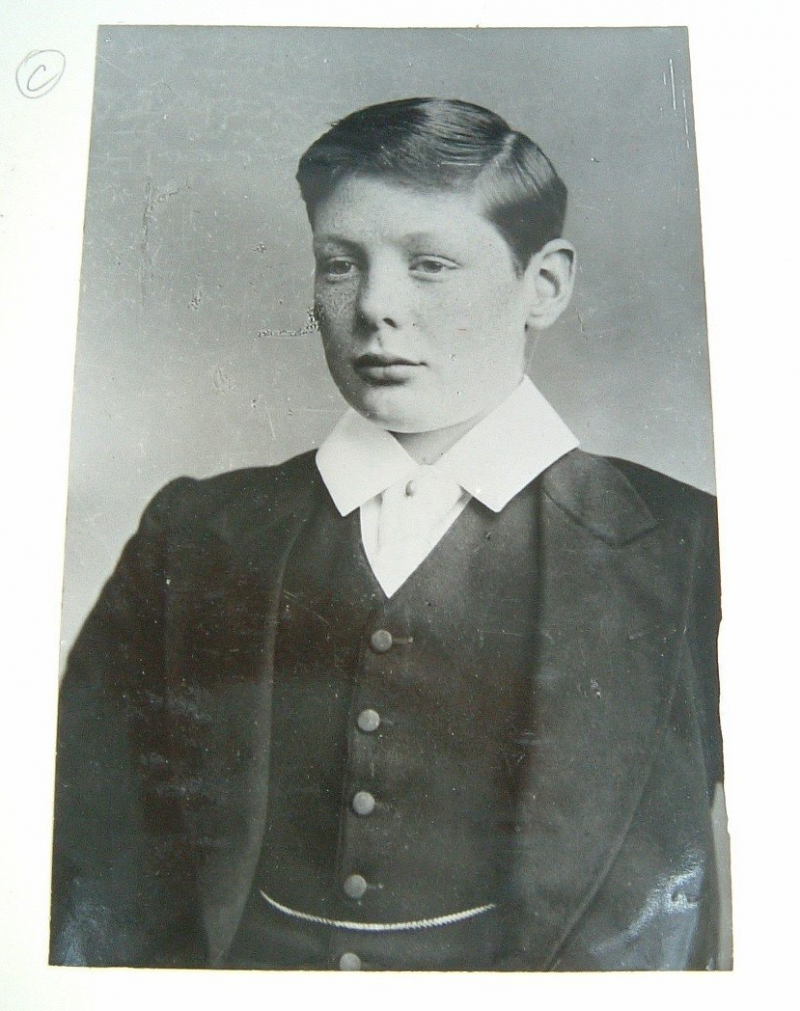
Photo: Alexander Fleming (young) - winstonchurchill -
Fleming, Leonard Colebrook, and Sir Almroth Wright joined the war effort during World War I and essentially relocated the entire St. Mary's Inoculation Department to the British military hospital at Boulogne-sur-Mer. As a Temporary Lieutenant in the Royal Army Medical Corps, he saw numerous troops pass away from sepsis brought on by infected wounds. Antiseptics were frequently used to treat wounds back then. Fleming noted that the widespread use of antiseptics was to blame for the deaths of many soldiers.
He described a brilliant experiment, which he was able to carry out thanks to his proficiency with glassblowing, in a 1917 article that was published in the medical journal The Lancet. Through this experiment, he was able to demonstrate why antiseptics were killing more soldiers than the infection itself during the war. In these circumstances, antiseptics appeared to remove protective agents created that protected the patients at least as effectively as they removed germs, but they did little to eradicate the bacteria that were out of reach in deep wounds, where they were more likely to hide from the antiseptic agent. Therefore, antiseptics killed both harmful and beneficial germs, which resulted in numerous fatalities.
Wright was a major proponent of Fleming's results, but throughout the war most army doctors continued to use antiseptics even when doing so made their patients' conditions worse because there were no other options.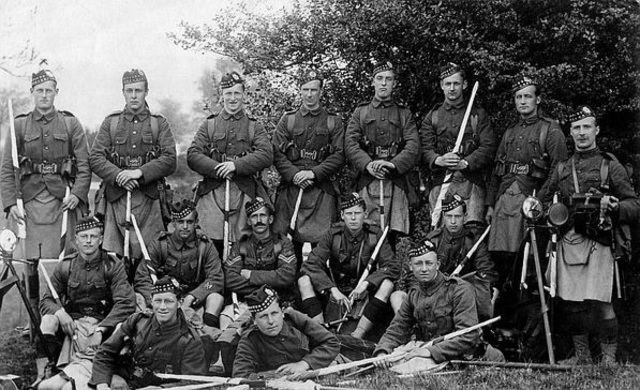
Photo: Alexander Fleming and soliders on WWI - timetoast 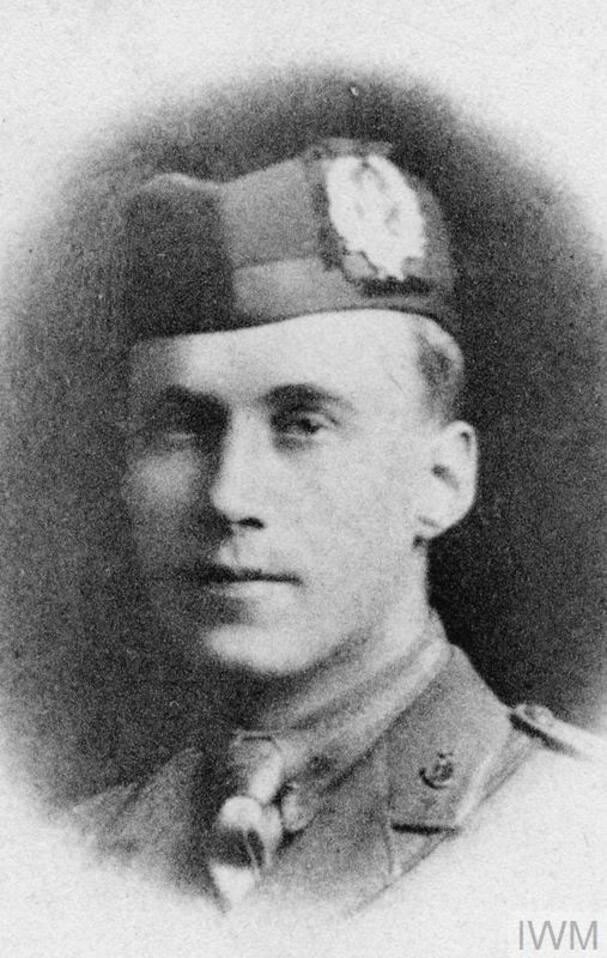
Photo: Alexander Fleming on WWI - iwm -
After vacationing with his family in Suffolk, Fleming returned to his laboratory on September 3, 1928. He put staphylococci on culture plates and left them on a bench in a corner of his lab before departing for his vacation. Upon his return, Fleming discovered that one culture was contaminated with a fungus and that the staphylococci colonies next to the fungus had been destroyed, while those staphylococci colonies farther away were healthy. He determined that the mold belonged to the Penicillium genus.
The Alexander Fleming Laboratory Museum at St. Mary's Hospital in Paddington preserves the space where Fleming first developed and tested penicillin. In 1966, it was determined that La Touché's chamber, which was directly beneath Fleming's, was the fungus's source.
Fleming developed the mold in pure culture and discovered that the broth from the culture contained an antibiotic component. He looked into how it affected various organisms and found that it had an antibacterial effect on bacteria like staphylococci and many other Gram-positive pathogens that cause scarlet fever, pneumonia, meningitis, and diphtheria, but not on the Gram-negative bacteria that cause typhoid fever or paratyphoid fever, for which he was looking for a treatment at the time. Neisseria gonorrhea, a gram-negative bacterium that causes gonorrhea, was also impacted. He first referred to the antibacterial ingredient included in the mold as “mold juice” or “the inhibitor” for a number of months before naming it penicillin on March 7, 1929.
Although it has encountered resistance in some regions of the world, the medication is still routinely used to treat respiratory infections like pneumonia and acute exacerbations.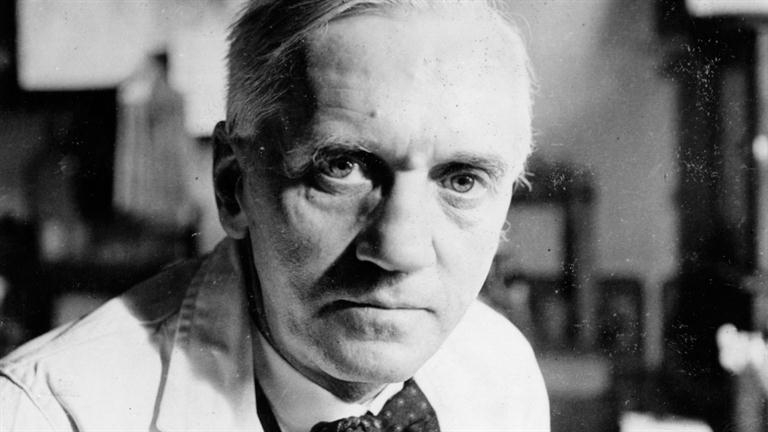
Photo: Alexander Fleming - bestplus 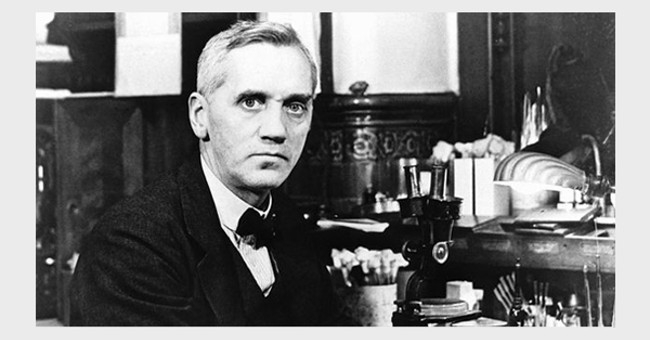
Photo: Alexander Fleming - khoahoc -
On February 13, 1929, Fleming made his discovery in front of the Medical Research Club. A medium for the isolation of Pfeiffer's bacillus that he discussed in his address did not get any special attention or comments. Henry Dale, the meeting's chair and then-Director of the National Institute for Medical Research, recalled decades later that he had not even noticed any particularly noteworthy aspect of Fleming's speech. In 1929, Fleming reported his discovery in the British Journal of Experimental Pathology, but the study received little attention. His issue was the challenge of isolating the primary ingredient, as well as the difficulties of making penicillin in big quantities. Chemical purification was ineffective, even with the assistance of Harold Raistrick and his group of biochemists at the London School of Hygiene and Tropical Medicine. Penicillin “lurched largely forgotten in the 1930s as a result” as Milton Wainwright put it.
The value of penicillin was not recognized until 1936. No one listened to Fleming when he described its medical significance at the Second International Congress of Microbiology in London. Even Fleming himself took a break from the investigation. The issue was that it was challenging to use penicillin in the human body, and the initial studies didn't produce promising outcomes. It took a long time to grow the mold that penicillin was made of. It was thought that this new material wouldn't work well for treating infections because it was difficult to isolate and produce in large quantities.
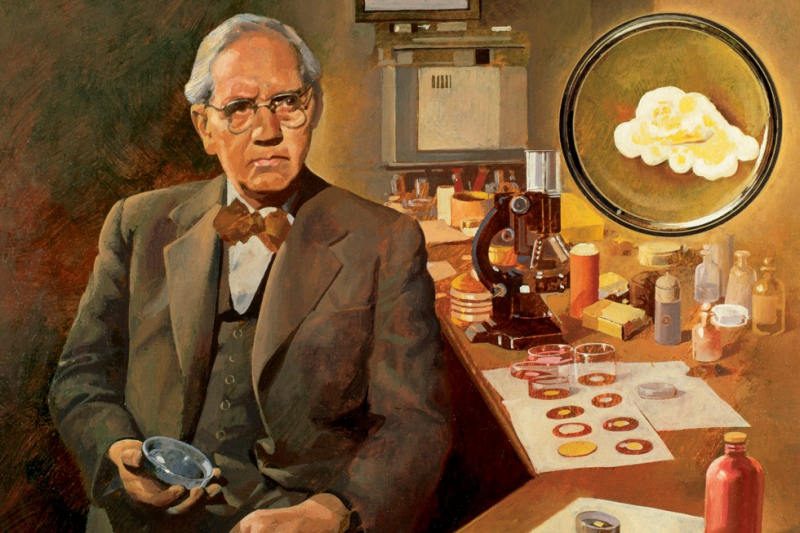
Photo: historyextra 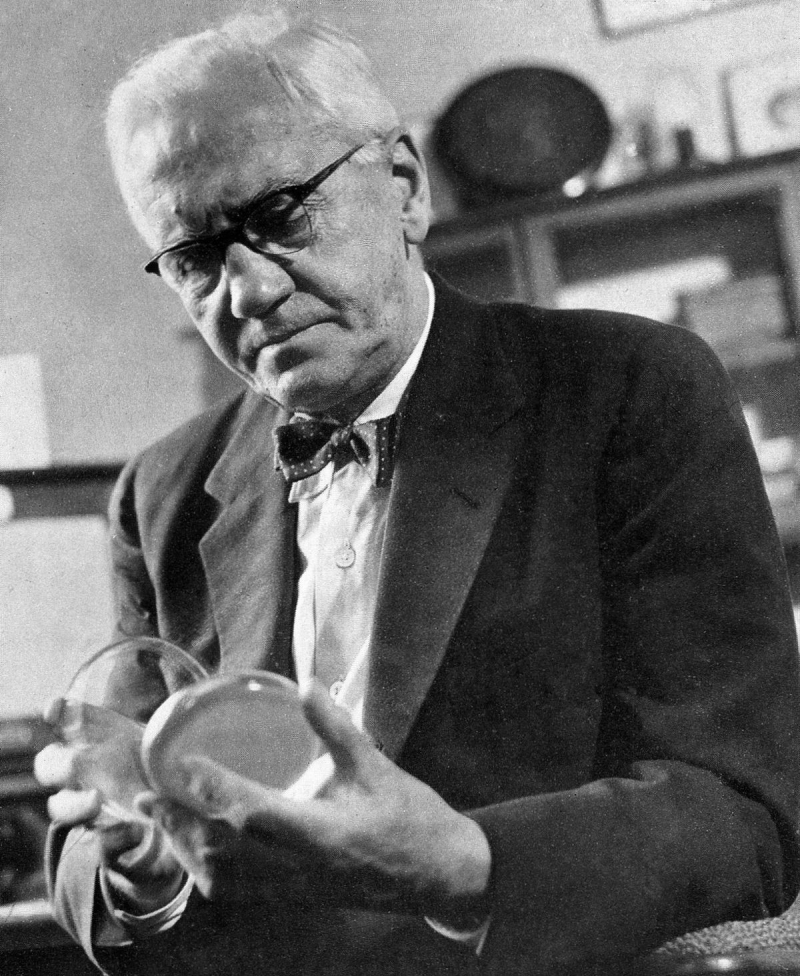
Photo; wikiquote -
Before he discovered antibiotics, Fleming also painted in addition to being a scientist. He produced amateur watercolors while a member of the Chelsea Arts Club. It is less commonly known that he also painted live things in a different media. Using bacteria, Fleming depicted ballet dancers, homes, warriors, women feeding their children, stick figures battling, and other situations. In order to achieve the desired hues, he grew microorganisms with various natural pigments in the desired locations.
He would put agar, a gelatin-like substance, in a petri dish and use a loop, a wire lab instrument, to inoculate various species in different areas of the plate. The paintings required a lot of technical skill to create. Fleming had to look for microorganisms with various colors and time his immunizations so that the several kinds matured at the same time. Only as long as it took for one species to develop into the other did these works exist. That led to a blurring of the boundaries between, for example, a hat and a face, as well as those between art and science.
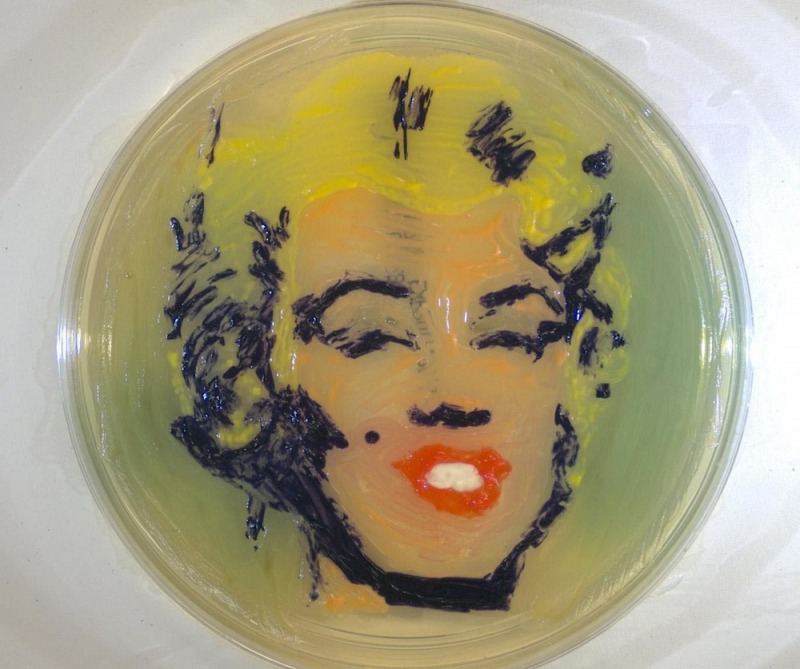
Photo: Alexander Fleming’s Microbial Art - amusingplanet 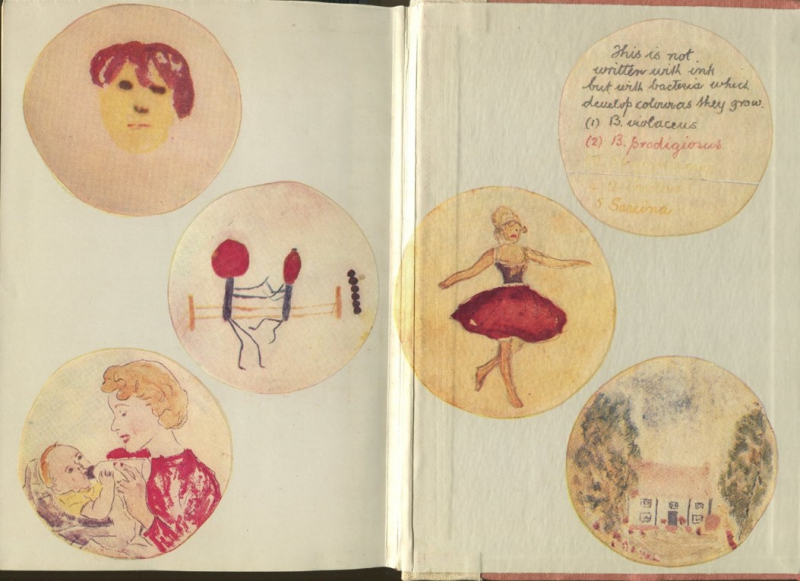
Photo: twitter -
A team of scientists in Oxford were able to develop penicillin and produce it in large quantities after Fleming gave up on his work. Edward Abraham and Ernst Boris Chain were doing research on the antibiotic's molecular makeup in Oxford. Abraham was the first to suggest that penicillin should have the proper structure.
Fleming was humble about his role in the discovery of penicillin; he called his renown the “Fleming Myth,” and he commended Florey and Chain for turning the experimental substance into a useful medication. Fleming had the honor of naming penicillin because he was the first to identify the qualities of the active ingredient. Additionally, he preserved, propagated, and dispersed the original mold for a period of twelve years. He also persisted in his efforts to find any scientist with the necessary expertise to produce penicillin until 1940. However, Sir Henry Harris stated in 1998 that “without Fleming, without Chain, without Florey, without Heatley, and without penicillin” Modern antibiotics were created with the discovery of penicillin and the subsequent development of the medicine as a prescription medication.
In 1945, Howard Florey, Alexander Fleming, and Ernst Boris Chain were awarded the Nobel Prize. More scientists, including Edward Abraham and Norman Heatley, were part of the study. Only three people can share an award, according to the Nobel Committee's guidelines.
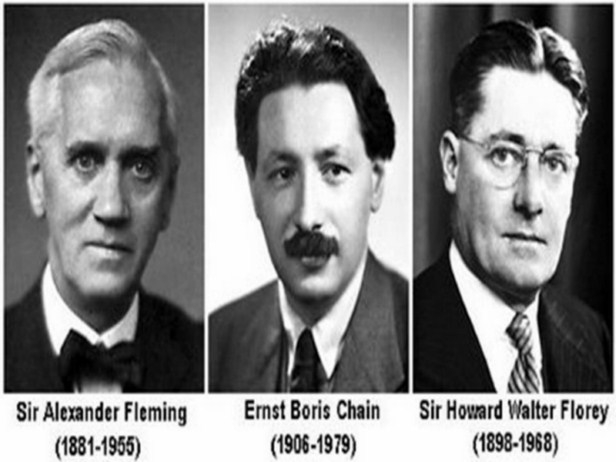
Photo: bibalex 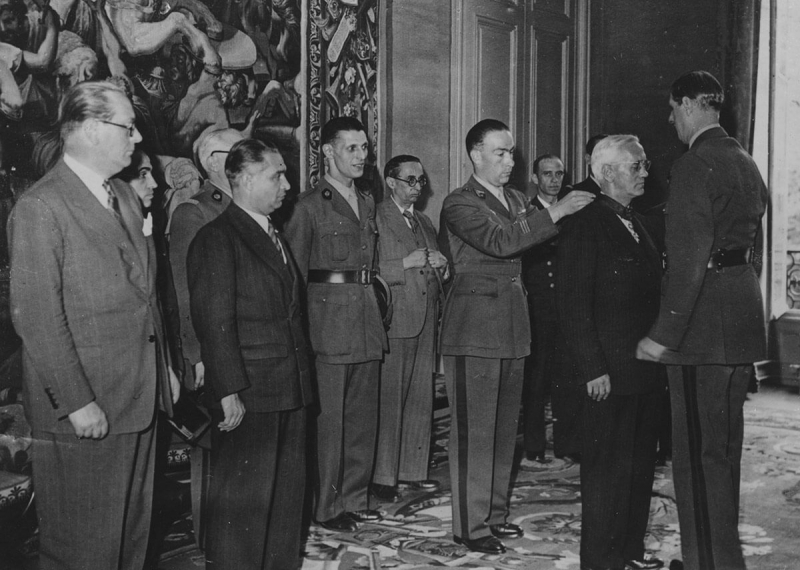
Photo: Sir Alexander Fleming at Nobel Prize Ceremony - historybyday -
With the advent of practical antibiotics brought about by Fleming's discovery of penicillin, contemporary medicine was forever altered. Penicillin has saved and continues to save millions of lives worldwide.
One of the interesting facts about Alexander Fleming is he won numerous other prestigious awards, in addition to the Nobel Peace Prize. In 1944, he received a knighthood, becoming Sir Alexander Fleming. He received the Hunterian Professorship from the Royal College of Surgeons of England; the Fleming Museum was also constructed in his honor and in recognition of his discoveries; and the British Broadcasting Corporation's list of the 100 Greatest Britons in 2002. His image appears on the new 5 Pound notes also, as provided by the Clydesdale Bank!
According to Time magazine's 1999 listing of Fleming among the 100 Most Important People of the 20th century, stating:
This discovery would alter the path of human history. Penicillin, which Fleming dubbed the active component in that mold, turned out to be a highly effective infection-fighting substance. Penicillin would forever change how bacterial illnesses are treated once it was acknowledged for what it was: the most effective life-saving medication in the world. Fleming's discovery gave rise to a massive pharmaceutical industry by the middle of the 20th century, which produced synthetic penicillins that would eradicate some of humanity's oldest ills, such as syphilis, gangrene, and tuberculosis.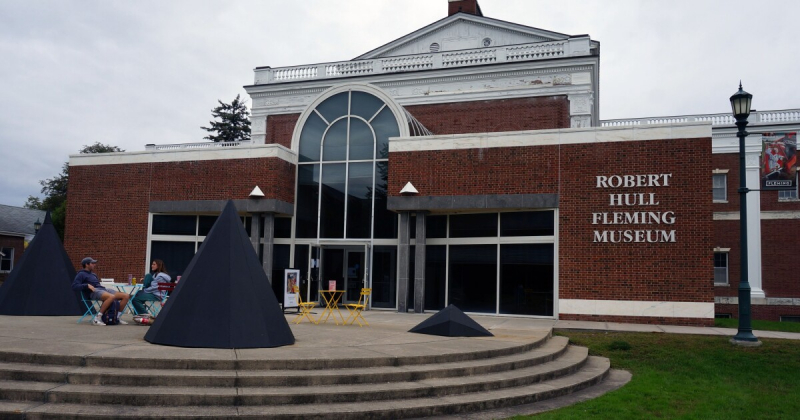
Photo: the Fleming Museum - vpr 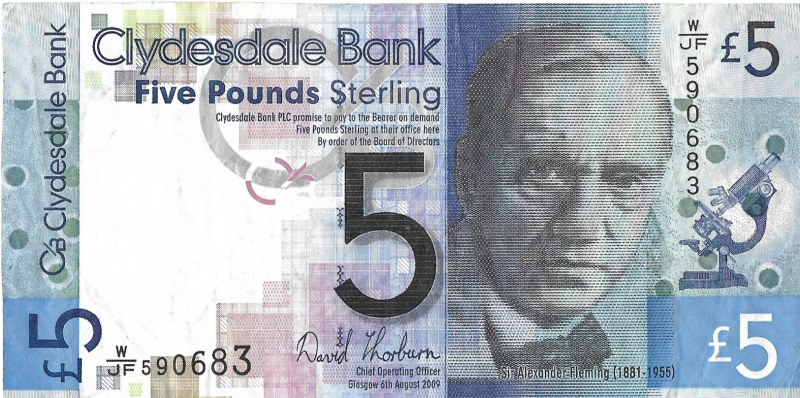
Photo: Image of Alexander Fleming appears on the new 5 Pound notes - numista









